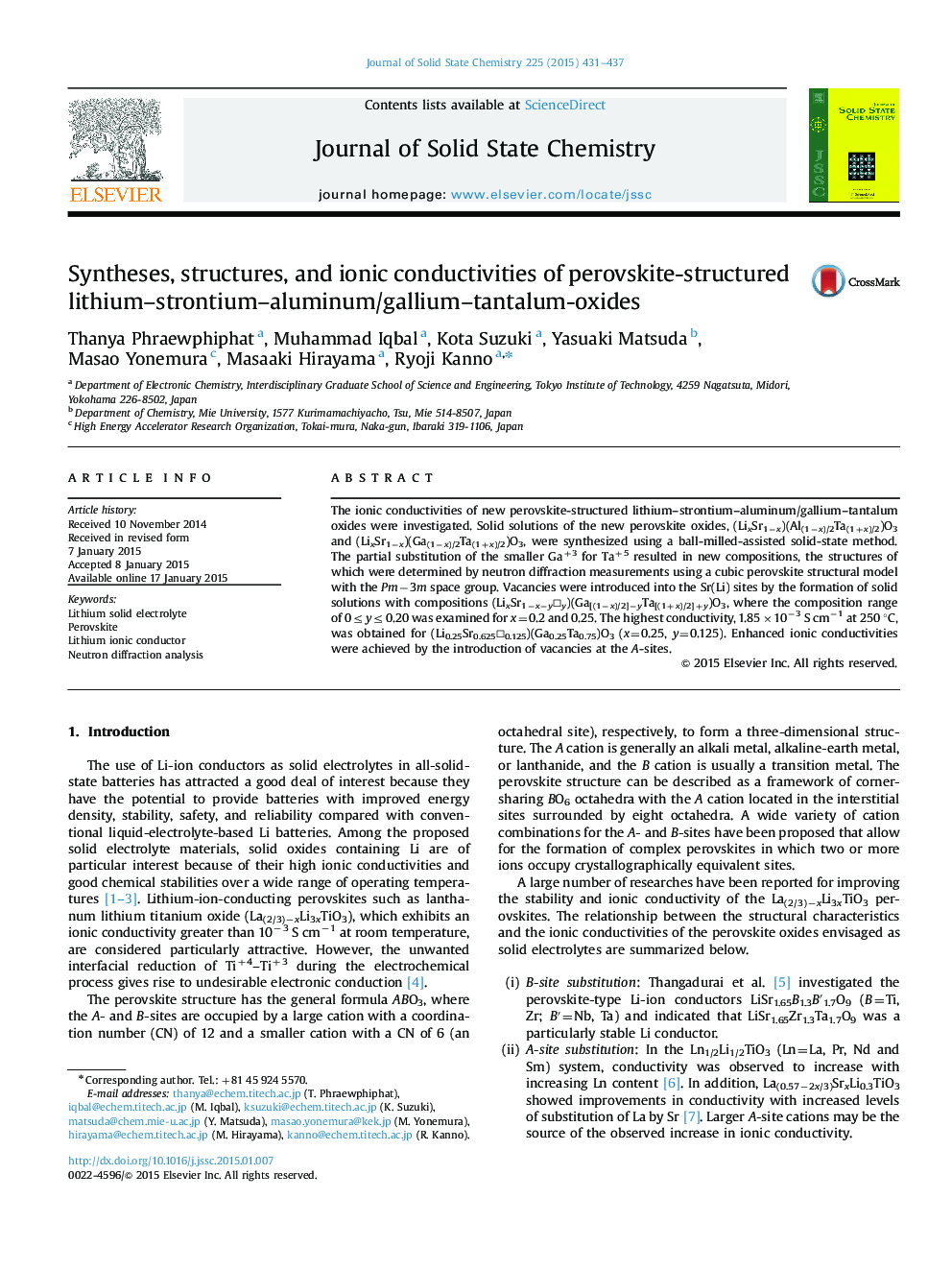| Article ID | Journal | Published Year | Pages | File Type |
|---|---|---|---|---|
| 1331651 | Journal of Solid State Chemistry | 2015 | 7 Pages |
•The perovskite-structured novel Li–Sr–Al/Ga–Ta oxides were investigated.•The Ga cation offers a larger bottleneck by increasing the BO bond length.•The greater conductivity was observed upon Ga-containing perovskite.•The ionic conductivity was improved by the introduction of vacancies into A-site.
The ionic conductivities of new perovskite-structured lithium–strontium–aluminum/gallium–tantalum oxides were investigated. Solid solutions of the new perovskite oxides, (LixSr1−x)(Al(1−x)/2Ta(1+x)/2)O3 and (LixSr1−x)(Ga(1−x)/2Ta(1+x)/2)O3, were synthesized using a ball-milled-assisted solid-state method. The partial substitution of the smaller Ga+3 for Ta+5 resulted in new compositions, the structures of which were determined by neutron diffraction measurements using a cubic perovskite structural model with the Pm−3m space group. Vacancies were introduced into the Sr(Li) sites by the formation of solid solutions with compositions (LixSr1−x−y☐y)(Ga[(1−x)/2]−yTa[(1+x)/2]+y)O3, where the composition range of 0≤y≤0.20 was examined for x=0.2 and 0.25. The highest conductivity, 1.85×10−3 S cm−1 at 250 °C, was obtained for (Li0.25Sr0.625☐0.125)(Ga0.25Ta0.75)O3 (x=0.25, y=0.125). Enhanced ionic conductivities were achieved by the introduction of vacancies at the A-sites.
Graphical abstractNovel lithium-conducting oxides with the cubic perovskite structure (LixSr1−x−y☐y)(Ga[(1−x)/2]−yTa[(1+x)/2]+y)O3 provide a specific solid-solution region with various x and y values, exhibiting the highest ionic conductivity (1.85 S cm−1 at 250 °C) for (Li0.25Sr0.625☐0.125)(Ga0.25Ta0.75)O3 (x=0.25, y=0.125 in (LixSr1−x−y☐y)(Ga[(1−x)/2]−yTa[(1+x)/2]+y)O3). The vacancies (☐) introduced into the A-sites contribute to the enhancement of lithium diffusion in the perovskite structure because of the enlargement of the bottleneck size and suppression of the interaction between lithium and oxygen.Figure optionsDownload full-size imageDownload as PowerPoint slide
